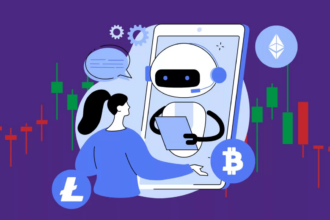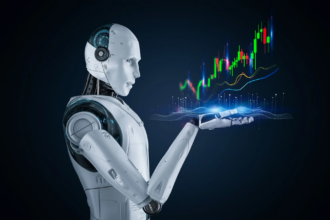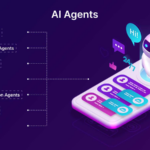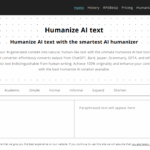The article addresses best AIs for Automated Cybersecurity Threat Detection as well as how smart technologies are changing the landscape of digital security. Darktrace, Microsoft Security Copilot, and CrowdStrike Falcon provide automated, real-time threat detection, anomaly identification, and response automation.
These AIs transform the speed, intelligence, and dependability of digital security by providing real-time protection to malware, ransomware, and other evolving cyber attacks.
Why Use AI for Automated Cybersecurity Threat Detection
Real-Time Threat Detection
- Feature: AI continuously observes network traffic and user activities.
- Benefit: Threats can be identified and reported instantly, stopping possible damage in its tracks.
Advanced Pattern Recognition
- Feature: Machine learning models identify unusual behavior.
- Benefit: Advanced attacks, zero-day threats, and insider threats that older technology would miss can be discovered.
Automated Response and Mitigation
- Feature: AI has the ability to take action to neutralize threats instantly.
- Benefit: Response time is improved from hours to seconds, and operational effect is lessened.
Scalability Across Systems
- Feature: AI can simultaneously observe thousands of devices and endpoints.
- Benefit: Large, intricate enterprise networks can be thoroughly safeguarded.
Continuous Learning and Adaptation
- Feature: AI self-enhances by studying new threats.
- Benefit: Cyber defenses can be maintained to counter new attack strategies.
Reduced Human Workload
- Feature: AI performs automated routine tasks of monitoring and threat analysis.
- Benefit: Security personnel can concentrate on less routine, high-stakes tasks requiring complex analysis.
Key Point & Best AI for Automated Cybersecurity Threat Detection List
| AI Cybersecurity Tool | Key Points / Features |
|---|---|
| Darktrace | Uses AI-driven behavioral analysis to detect and respond to threats in real time. |
| CrowdStrike Falcon | Cloud-native platform combining AI and endpoint protection for rapid threat detection. |
| Microsoft Security Copilot | Integrates AI to provide actionable insights and automated threat response across systems. |
| Palo Alto Cortex XDR | AI-powered extended detection and response with cross-platform visibility. |
| Sophos Intercept X | Leverages deep learning for malware detection and automated threat mitigation. |
| Fortinet FortiAI | AI-driven network threat intelligence with autonomous detection and response. |
| Vectra AI | Detects hidden threats and network anomalies using behavioral AI analytics. |
| ReaQta Hive AI | Autonomous AI endpoint protection with real-time threat hunting and automated response. |
1. Darktrace
Darktrace is acknowledged as one of the best AI solutions for automated cybersecurity threat detection for merging sophisticated machine learning with real-time behavioral analytics to safeguard more sophisticated digital landscapes.
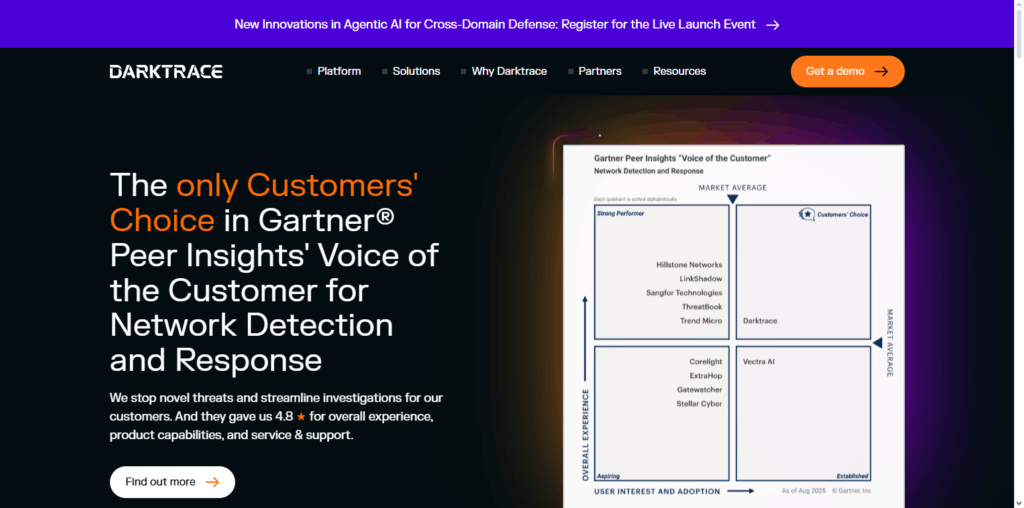
In contrast to standard security solutions which use rules or signatures, Darktrace learns continuously, understanding the normal behavior patterns of users, devices, and networks, thus being capable of identifying even the faintest anomalies which trigger a potential threat.
Its self-learning AI independently attacks emerging cyber threats, responding immediately to contain an attack, whether it is an insider threat, stealth attack, or zero-day vulnerability. The platform’s unique proactive approach is an outcome of its exceptional dynamic adaptability to the environment and emerging threats.
Darktrace Features
- Behavioral Threat Detection: Learns what normally occurs in users and networks to identify deviations suggesting possible risks.
- Autonomous Response: Threats are isolated without human intervention to stop them from spreading.
- Real-Time Monitoring: Consistently evaluates the network and devices to recognize attacks as they occur.
2. CrowdStrike Falcon
Among the best AI tools designed for automated cybersecurity threat detection, the CrowdStrike Falcon AI system is unique for its machine learning capabilities and its cloud-native architecture. It identifies, analyzes, and sorts endpoints to detect malicious activity, ransomware, and advanced threats that traditional antivirus software often overlooks.
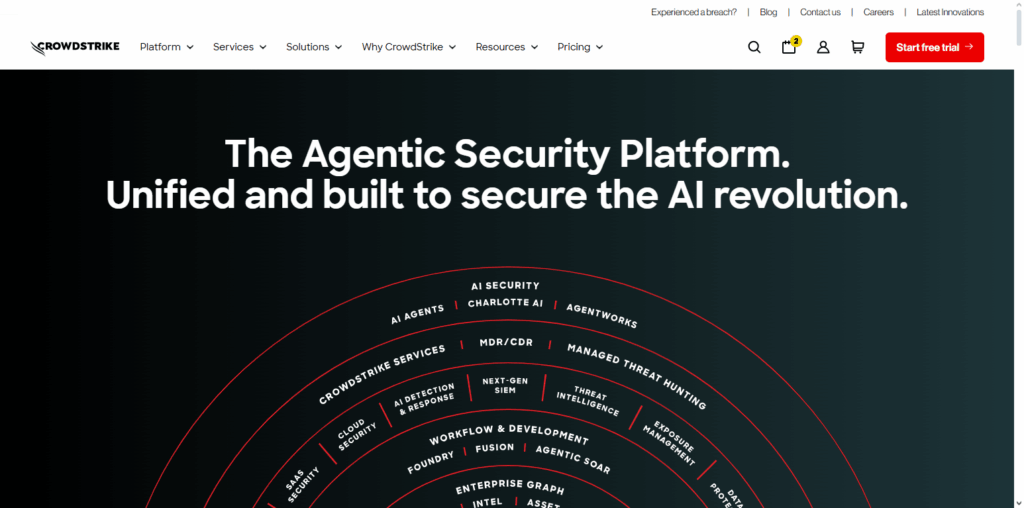
It is unique because, in addition to AI driven detection, it analyzes threat intelligence being generated from its global interconnected network in real-time, allowing it to predict threats and attacks and actively prevent them from escalating.
Moreover, CrowdStrike Falcon has automated response and remediation capabilities that can directly isolate compromised system. It is this integrated and dynamically adjustable method that guarantees endpoint complete and endpoint comprehensive cybersecurity protection that is ultimately what makes it one of the best AI powered cybersecurity systems.
Crowdstrike Falcon Features
- Cloud-Native Endpoint Protection: Endpoint security is lightweight, scalable, and does not interfere with performance.
- Threat Intelligence Integration: Detects and predicts attacks through proactive means leveraging global threat data.
- Automated Remediation: Threats such as malware and ransomware are isolated and neutralized without manual input.
3. Microsoft Security Copilot
Microsoft Security Copilot receives high praise as an AI-driven solution built to improve the automated detection of cybersecurity threats and to enhance the efficiency of Security Operations with intelligent automation as well as contextualized insights.
Security Copilot most uniquely benefits from the considerable threat intelligence of Microsoft combined with advanced AI persuasive intelligence to quickly identify, investigate, and respond to a myriad of cyber threats within complex enterprise environments.
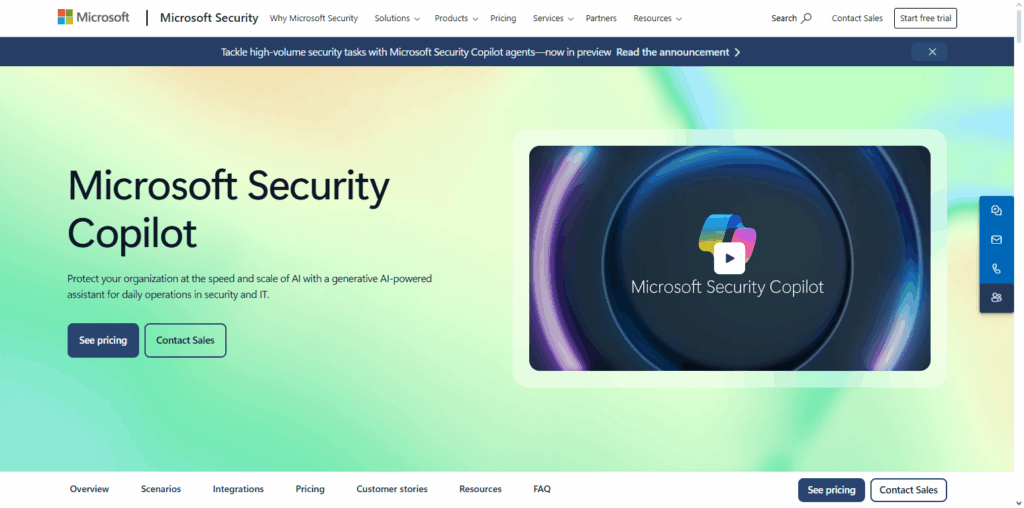
Security Copilot reduces the workload of human analysts by performing real-time analyses of enormous volumes of security data, correlating alerts, and offering actionable guidance.
As Microsoft security ecosystems is integrated into attack patterns, Security Copilot maintains and executes, with a high degree of accuracy, modern cyber threat protection that is proactive, adaptive, and responsive.
Microsoft Security Copilot Features
- AI-Powered Threat Insights: Threats are handled through action-oriented suggestions derived from extensive security data and alert correlation.
- Automated Investigation: Threats and attacks are investigated automatically and prioritized.
- Integration with Microsoft Ecosystem: Works in tandem with Microsoft Defender, Sentinel, and other cloud services.
4. Palo Alto Cortex XDR
Palo Alto Cortex XDR’s cutting-edge AI technology is integrated into an automated threat detection system. This system is particularly effective for unified endpoint, network, and cloud environment data.
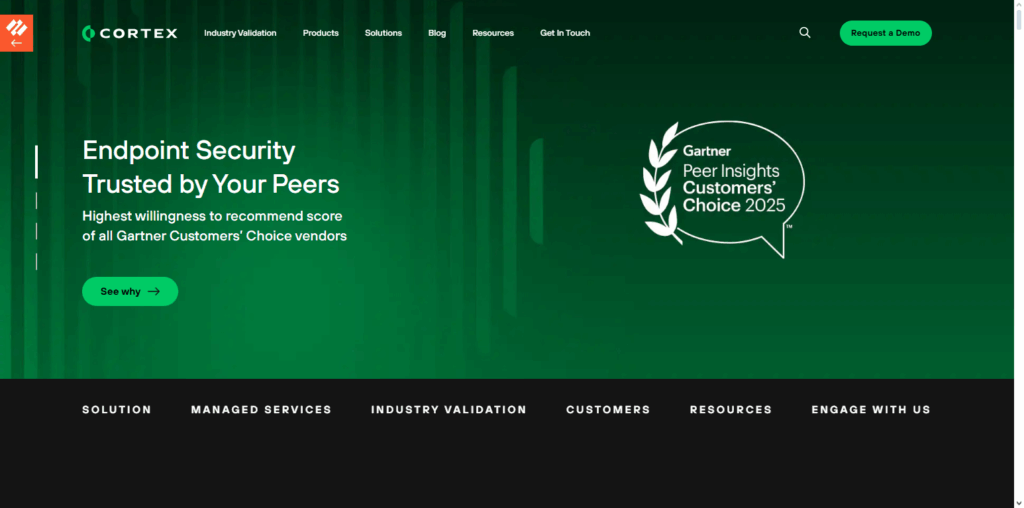
The system’s distinctive feature is its complex multi-layered risk threat detection capabilities. Advanced machine learning is used to detect and assess risks across multiple attack vectors. In addition to real-time detection of anomalies and hostile attempts, Cortex XDR automates threat lifecycle investigations and response workflows.
This contraction of mitigation time is critical in handling emerging threats. Through correlating and analyzing multiple data streams, it employs constant and adaptive cyber defense techniques and modern multi-layered machine learning techniques. All enterprises receive unparalleled 21st century cyber-attack defense and protection.
Palo Alto Cortex XDR Features
- Extended Detection & Response: Provides a complete picture of threats by connecting clouds, networks, and endpoints.
- AI-Powered Analytics: Leverages machine learning to recognize advanced and intricate attacks.
- Automated Response Workflows: Initiates AI-driven response to containment and mitigation actions.
5. Sophos Intercept X
Sophos Intercept X is among the leading AI solutions for automated cybersecurity threat detection—and for good reason. The combination of deep learning capabilities and a multi-layered defense approach makes it truly unique.

The most impressive multifaceted AI malware detection coupled with exploit and ransomware blocking, behavioral analysis, and ransomware protection enables it to spotlight threats that many legacy systems overlook. Real-time autonomous threat containment is possible due to the adaptive AI surveillance that continuously analyzes and identifies suspicious endpoint activity.
The synchronized security architecture allows rapid threat isolation and enables endpoint, server, and network integrated protection to work in unison. This ensures intelligent and highly effective cybersecurity defense.
Sophos Intercept X Features
- Deep Learning Malware Detection: Advanced AI differentiates between known and unknown malware.
- Ransomware Protection: Stops ransomware and prevents critical file encryption.
- Exploit Prevention: Proactively stops potential system-compromising exploits and suspicious behavior.
6. Fortinet FortiAI
Fortinet FortiAI offers an advanced AI solution for automated detection of cybersecurity threats. Designed to improve response to threats and incident handling with unprecedented speed, it offers distinct capabilities.
It harnesses deep neural networks analyzing massive amounts of global threat data to identify advanced threats, including malware, ransomware, and other emerging risks in real-time.
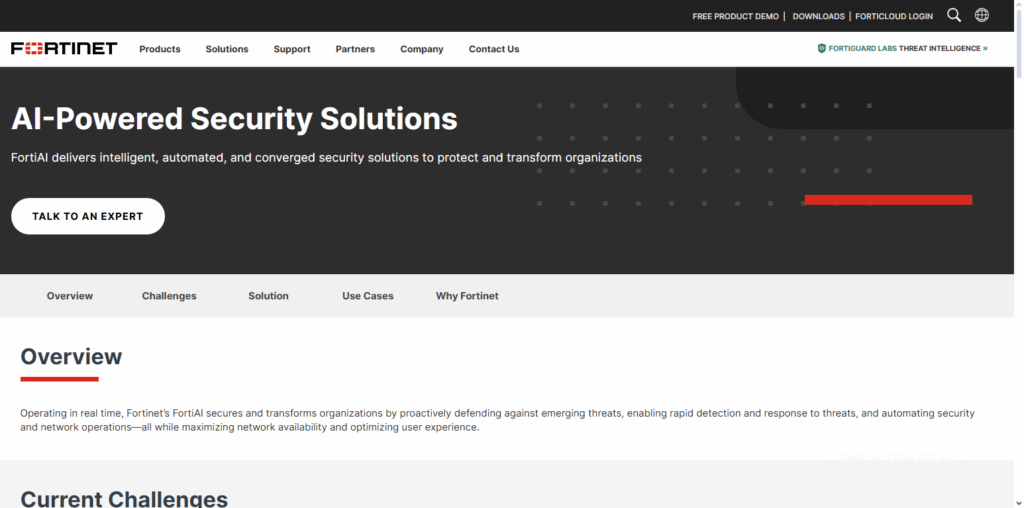
FortiAI performs autonomous investigations of alerts, assesses the threats, and may recommend or take a variety of automated response actions to mitigate the risks, thereby unburdening security teams.
It has contextual awareness of networks, endpoints, and cloud environments. This security ecosystem integration and autonomous learning and response capabilities, along with extensive threat visibility, truly positions FortiAI as a best-in-class AI cybersecurity solution.
Fortinet FortiAI Features
- Autonomous Threat Detection: Neural networks identify sophisticated attacks based on global threat data.
- Automated Incident Response: Alert triage and remediation take place entirely without human action.
- Seamless Ecosystem Integration: Assured unity throughout Fortinet security devices.
7. Vectra AI
Vectra AI stands out as an innovative leader in automated cybersecurity AI solutions. My work involves cyberthreat visibility, analytics, behavioral analytics, and rapid, automated detection. Vectra AI has pioneered tracking and analyzing network traffic in real time, while identifying anomalies, hidden subtleties, and evasive threats.
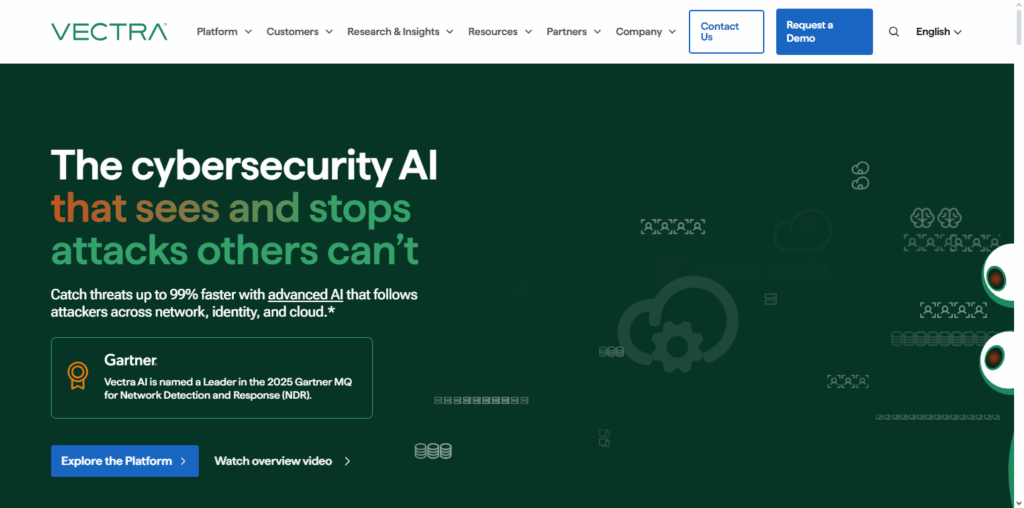
Vectra AI identifies cyberthreats in the preventative stages of an attack and identifies real-time, actionable insights related to insider threats and lateral movement. An automated attack response is generated and maintained to optimize and prioritize risk levels using threat intelligent machine learning tools in attack modeling, aiding rapid response within an automated threat detection system.
Comprehensive and intelligent threat detection and rapid response is maintained, allowing full network system integrity protection within multidimensional enterprise network system layers.
Vectra AI Features
- Network Behavioral Analytics: Probes traffic on an ongoing basis to identify elusive hidden threats.
- Early Threat Detection: Detects insider threats, lateral movement, and attack patterns in real time.
- Risk-Based Prioritization: Gauges threats on an escalating scoring system and saves critical threats.
8. ReaQta Hive AI
ReaQta Hive AI is pioneering a new approach to automated threat detection in cybersecurity, having won recognition for its fully autonomous endpoint protection and real-time threat hunting features. Its self-learning AI agents continuously evaluate endpoints for unusual behavior, malware, and ransomware, identifying even the most elusive attacks.
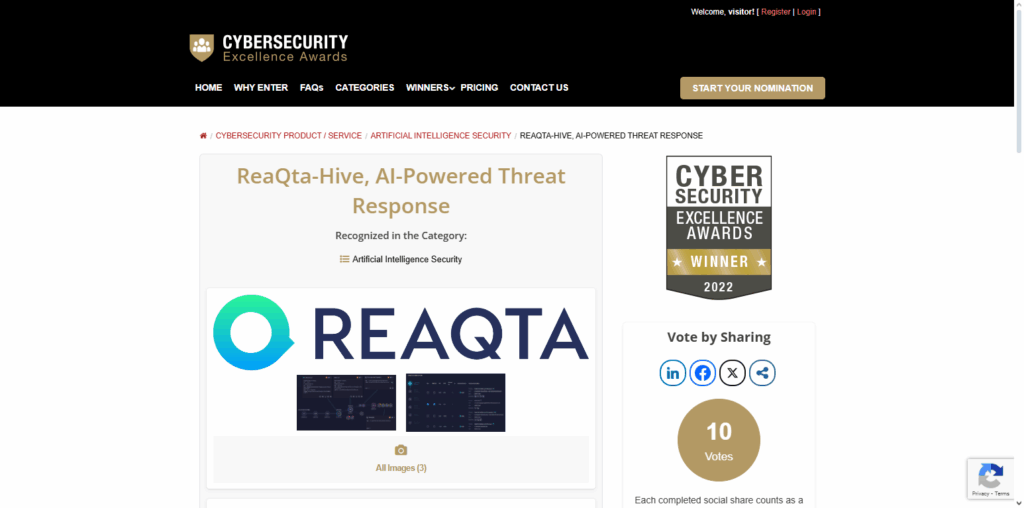
Not only does ReaQta Hive AI detect threats, but it can also automatically contain and remediate them, dramatically reducing response time with little human input. Its lightweight and scalable architecture enables it to be installed in different environments– from enterprise networks to the cloud. The synthesis of intelligent automation with proactive threat detection means that it provides a dependable, adaptive, and efficient cybersecurity defensive posture.
ReaQta Hive AI Features
- Autonomous Endpoint Protection: AI-driven agents detect malware, ransomware, and anomalies on monitored endpoints.
- Real-Time Containment: Automatically isolates compromised systems to prevent threat spread.
- Lightweight and Scalable: Can be deployed throughout corporate networks and across the clouds.
Risk & Consider
Risks of AI in Cybersecurity
- False Negatives and Positives
- AIs could mistake genuine activity as malicious and disrupt operations, or miss potential threats and leave security gaps.
- Adversarial AI Attacks
- Hackers could attempt to sneak past detection systems by deceiving manipulated AI.
- Over Reliance on AI
- AI independence could lower sentinels to watch data syntheses, increasing vulnerability if the AI system glitches or misreads data.
- Data Privacy and Compliance
- AI’s need to access multifaceted datasets will raise user privacy and compliance concerns.
Key Considerations
- Human in the Loop
- AI detection systems should be coupled with human analysts to confirm alerts and avert critical errors.
- Continuous Model Training
- AI systems need to be updated with new threat models and intel to keep pace with evolving threats globally.
- Integration Flexibility with Current Security Tools
- AI systems should be able to work seamlessly with firewalls, SIEM, and endpoint protections to provide holistic coverage.
- Scalability and Performance
- Determine if the AI model can cope with a considerable amount of traffic and a multitude of endpoints without impairing operational speed.
Conclusion
AI-powered cybersecurity platforms utilize real-time monitoring, machine learning, and automated responses to transform digital environments protection. Darktrace, CrowdStrike Falcon, Microsoft Security Copilot, Palo Alto Cortex XDR, Sophos Intercept X, Fortinet FortiAI, Vectra AI, and ReaQta Hive AI offer unique products.
From behavioral analytics and endpoint protection to autonomous threat hunting and cross-platform integration. These AI systems are advanced systems, automated processes, and self-adapting mechanisms. Integrated systems offer intelligent cyber solutions that protect modern businesses پیشرفته.
FAQ
What is AI in cybersecurity?
AI in cybersecurity uses machine learning, behavioral analytics, and automation to detect, analyze, and respond to threats faster and more accurately than traditional methods.
Why use AI for threat detection?
AI can monitor large volumes of data in real time, identify subtle anomalies, detect zero-day attacks, and automate responses, reducing human workload and minimizing risks.
Which AI platforms are considered the best for threat detection?
Top platforms include Darktrace, CrowdStrike Falcon, Microsoft Security Copilot, Palo Alto Cortex XDR, Sophos Intercept X, Fortinet FortiAI, Vectra AI, and ReaQta Hive AI.
How does AI detect unknown or emerging threats?
AI learns normal network and user behavior, then identifies deviations that indicate potential threats, including zero-day attacks and insider threats.


